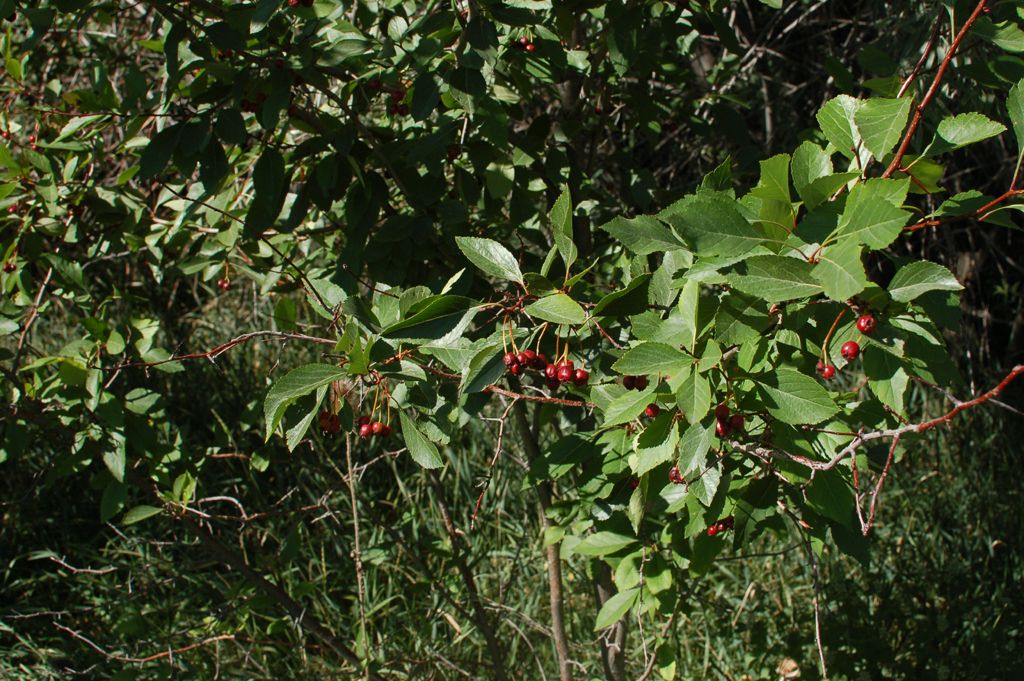|
Family: Rosaceae |
Fls perfect, regular, in compound or nearly simple cymes, or rarely solitary; pet 5, white, rarely pink or red; sep 5, entire or glandular-serrate; stamens 5-25, arranged alternately in 1-5 rows; ovary inferior or free at the tip, the 1-5 carpels with as many persistent free styles; fr a small, globose to ovoid or pyriform pome, usually red or reddish, sometimes yellow, greenish, or blue-black, with 1-5 bony, usually 1-seeded nutlets; small trees or shrubs with usually thorny and often flexuous branches; lvs simple, deciduous, toothed and often also lobed, those of the flowering branches (the floral lvs) often unlike those of strictly vegetative branches; x=16, 17. Our spp. all fl in the spring and fr in the fall. 100+, N. Temp. and Andes.
The spp. of Crataegus characteristically occur in disturbed sites or seral communities, such as pastures, edges of the forest, open second-growth woods, and thickets along streams. It has not been considered necessary to repeat these comments on the habitat for each species in the following text.
The taxonomy of Crataegus is complicated by hybridization, polyploidy, aneuploidy, and apomixis. Several hundred species have been described from our range alone. A proper understanding of the group will require a thorough biosystematic study; the treatment here presented is rough and more than ordinarily tentative. Some names suspected or believed to apply to hybrids or plants of hybrid origin are listed before the key to accepted species.
C. ءnomala Sarg. = C. coccinea נmollis
C. ءpiomorpha Sarg. = C. coccinea נflabellata
C. ءrdua Sarg. = C. punctata נsucculenta
C. ءulica Sarg. = C. coccinea נdilatata
C. أelsa Sarg. = C. punctata נsucculenta
C. أhadsfordiana Sarg. = C. pruinosa נsucculenta
C. أollicola Ashe = C. crus-galli נpunctata
C. أorusca Sarg. = C. coccinea נmollis
C. ؤanielsii E. J. Palmer = C. crus-galli נpunctata
C. ؤensiflora Sarg. = C. flabellata נrotundifolia
C. ؤesueta Sarg. = C. brainerdii נpunctata
C. ؤisperma Ashe = C. crus-galli נpunctata
C. ؤivida Sarg. = C. brainerdii נsucculenta
C. ؤurobrivensis Sarg. = C. pruinosa נpunctata
C. إllwangeriana Sarg. = C. coccinea נmollis [Continued] Gleason, Henry A. & Cronquist, Arthur J. 1991. Manual of vascular plants of northeastern United States and adjacent Canada. lxxv + 910 pp. ©The New York Botanical Garden. All rights reserved. Used by permission. |


